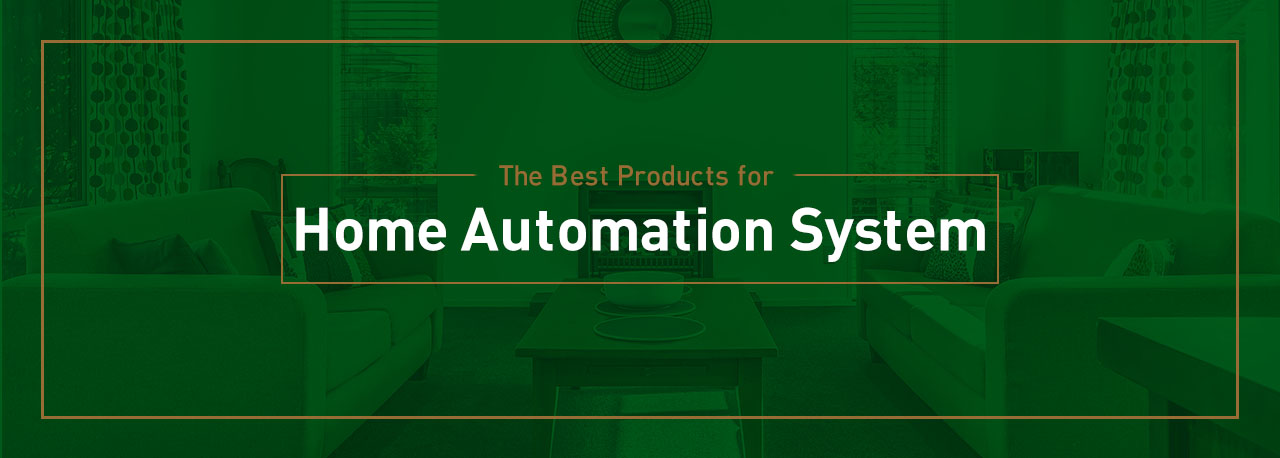Home automation has revolutionized the way we live, providing us with unprecedented control and convenience in managing various aspects of our homes. With the advancement of technology, the concept of a smart home has become a reality for many homeowners. In this article, we will explore the best products for home automation, considering factors such as functionality, compatibility, and ease of use.
Introduction to Home Automation System
Home automation system refers to the integration of technology and devices within a home to provide control and automation of various systems and appliances. Through the use of smart devices, sensors, and interconnected systems, homeowners can remotely manage and monitor their homes, enhancing security, energy efficiency, and overall comfort.
Benefits of Home Automation
Home automation offers numerous benefits to homeowners, making it an appealing choice for those looking to upgrade their living spaces. Some of the key advantages include:
- Convenience: Home automation allows you to control and manage multiple devices and systems from a centralized platform, making it easier to adjust settings, monitor activities, and perform routine tasks.
- Energy efficiency: Smart home systems enable efficient energy management by automating lighting, heating, and cooling systems. This leads to reduced energy consumption and lower utility bills.
- Enhanced security: Home automation systems integrate security features such as smart locks, door/window sensors, and security cameras, providing homeowners with increased control and monitoring capabilities.
- Increased comfort: With home automation, you can customize your living environment based on your preferences. Adjusting the temperature, lighting, and audio/video systems to create the desired ambiance becomes effortless.
Key Components of a Home Automation System
A home automation system comprises various components that work together to provide seamless control and automation. These components include:
Smart Hubs and Controllers
Smart hubs and controllers serve as the central command center for your home automation system. They connect and control all the smart devices within your home, enabling communication and coordination between them.
Connected Devices
Connected devices form the backbone of a home automation system. These can include smart thermostats, smart lighting systems, smart appliances, security cameras, and more. These devices are designed to be compatible with the central hub/controller and can be controlled remotely through mobile apps or voice commands.
Communication Protocols
Communication protocols are the standardized methods used for devices to communicate with each other and the central hub/controller. Popular protocols include Wi-Fi, Bluetooth, Zigbee, and Z-Wave. It is essential to ensure that the devices you choose are compatible with the communication protocol supported by your home automation system.
Top Home Automation Systems in the Market
When it comes to choosing a home automation system, there are several options available in the market. Let’s explore three popular systems and their features:
System A: Features, Pros, and Cons
System A is known for its user-friendly interface and extensive device compatibility. It offers seamless integration with popular voice assistants and supports various communication protocols. However, it may have a higher upfront cost compared to other systems.
System B: Features, Pros, and Cons
System B focuses on energy efficiency and offers advanced automation capabilities. It provides detailed energy consumption reports and allows for intricate scheduling of devices. However, it might have limited device compatibility compared to other systems.
System C: Features, Pros, and Cons
System C is renowned for its robust security features, ensuring the protection of your smart home devices and data. It utilizes encryption and offers multi-factor authentication. However, it may have a steeper learning curve and fewer customization options.
The Best Products for Home Automation:
Smart speakers have become the centerpiece of many smart homes, offering voice control and integration with other smart devices. These intelligent assistants provide a convenient way to control your home automation system. Here are some of the best smart speakers on the market:
1. Amazon Echo (2nd Generation)
The Amazon Echo is a popular choice for smart home enthusiasts. With its voice-activated assistant, Alexa, you can control your home automation system using simple voice commands. From turning off lights to adjusting the thermostat, the Amazon Echo does it all.
2. Google Home
Google Home is another top contender in the smart speaker market. Powered by the Google Assistant, it seamlessly integrates with various smart home devices. With Google Home, you can control your lights, play music, and even get answers to your questions.
3. Apple HomePod
For Apple enthusiasts, the Apple HomePod is the go-to choice. Siri, Apple’s virtual assistant, allows you to control your smart home devices effortlessly. The HomePod also delivers exceptional sound quality, making it a perfect addition to any home.
4. Philips Hue Lighting:
These smart LED bulbs can be controlled wirelessly, allowing you to adjust brightness, color, and even set schedules or create custom lighting scenes using your smartphone or voice commands.
5. Nest Learning Thermostat:
This smart thermostat learns your heating and cooling preferences over time, automatically adjusting the temperature based on your habits and preferences. It can be controlled remotely using a mobile app.
6. August Smart Lock:
This smart lock allows you to control and monitor your door locks from anywhere using your smartphone. You can provide temporary access to guests and receive notifications whenever someone enters or exits your home.
7. Ring Video Doorbell:
This doorbell has a built-in camera and motion sensors, allowing you to see and communicate with visitors through your smartphone or tablet. It also provides motion-activated alerts and can record video footage.
8. Samsung SmartThings Hub:
This central hub connects and controls various smart devices in your home, including lights, locks, sensors, and appliances. It offers compatibility with a wide range of devices from different manufacturers.
9. Ecobee Smart Thermostat:
Similar to the Nest thermostat, the Ecobee smart thermostat helps you save energy by adjusting temperature settings based on occupancy and outside weather conditions. It also features room sensors for enhanced control.
10. Arlo Pro Security Cameras:
These wireless security cameras offer high-definition video monitoring, motion detection, and two-way audio. They can be accessed remotely through a mobile app and offer optional cloud storage for video recordings.
11. Lutron Caseta Wireless Dimmers:
These smart dimmers allow you to control and customize the lighting in your home. You can set schedules, create scenes, and control multiple lights simultaneously using a mobile app or voice commands.
12. iRobot Roomba Vacuum:
This autonomous vacuum cleaner uses advanced sensors to navigate and clean your floors automatically. It can be scheduled to clean at specific times or controlled remotely through a mobile app.
Factors to Consider When Choosing a Home Automation System
When selecting a home automation system, it’s important to consider several factors to ensure it meets your specific needs and requirements. These factors include:
Compatibility
Ensure that the system and devices you choose are compatible with each other. This ensures seamless integration and prevents compatibility issues down the line.
Scalability
Consider the scalability of the system. You may want to expand your home automation capabilities in the future, so choosing a system that allows for easy integration of new devices is essential.
User-friendliness
Opt for a system that is easy to set up and use. Look for intuitive interfaces, mobile apps, and clear instructions to simplify the installation and customization process.
Security
Home automation systems handle sensitive data and control important aspects of your home. Choose a system with robust security features to protect your privacy and prevent unauthorized access.
Integration with Other Devices
If you already own smart devices or have plans to invest in specific brands, ensure that the home automation system you choose is compatible with those devices. Compatibility with voice assistants is also an important consideration.
The Role of Voice Assistants in Home Automation
Voice assistants have gained popularity in recent years and have become an integral part of home automation systems. By using voice commands, homeowners can control various devices and systems, making the management of smart home automation even more convenient. Voice assistants can perform tasks such as adjusting the lighting, setting the temperature, playing music, and even providing information or answering questions.
Cost Considerations of Home Automation
Home automation systems can vary in cost, depending on the complexity and features offered. Consider both the initial investment and long-term expenses when choosing a system. Factor in the cost of devices, installation, maintenance, and any subscription fees for advanced features or cloud storage.
How to Get Started with Home Automation
Getting started with home automation involves several steps to ensure a successful implementation:
- Assess your needs and goals: Determine which aspects of your home you want to automate and prioritize your requirements.
- Plan the system: Create a detailed plan that includes the devices you need, their locations, and any additional requirements such as wiring or network infrastructure.
- Installation and setup: Follow the manufacturer’s instructions to install and set up the home automation system and connected devices. This may involve connecting the hub/controller, configuring devices, and linking them to the central system.
- Learning and customization: Familiarize yourself with the system’s features and capabilities. Customize settings, create schedules, and explore automation possibilities to tailor the system to your preferences.
FAQs
1. Can I control my home automation system when I’m away from home?
Yes, most home automation systems offer remote access through mobile apps or web interfaces, allowing you to control your smart home from anywhere with an internet connection.
2. Are all smart home devices compatible with every home automation system?
No, compatibility varies between systems and devices. It’s essential to check compatibility before purchasing devices to ensure they can be integrated into your chosen home automation system.
3. Are home automation systems difficult to install?
Installation difficulty can vary depending on the complexity of the system and your technical skills. Some systems offer easy plug-and-play setups, while others may require professional installation.
4. Can I add more devices to my home automation system over time?
Yes, most home automation systems allow for the addition of devices as your needs and preferences evolve. Ensure that the system you choose supports the addition of new devices.
5. How secure are home automation systems from hacking or unauthorized access?
Home automation systems prioritize security and employ various measures to protect your data and devices. However, it’s crucial to follow recommended security practices such as using strong passwords and keeping the system up to date.
Conclusion
Home automation systems have transformed the way we interact with our homes, providing convenience, energy efficiency, and enhanced security. By selecting the right home automation system and devices, homeowners can enjoy a seamless and personalized smart home experience. Whether you reside in a cozy apartment or a luxurious villa like Beverly Golf Avenue, incorporating a home automation system can greatly enhance your lifestyle.
Whether you’re a homeowner at Beverly Golf Avenue or any other residence, taking these factors into account will help you make an informed decision when choosing a home automation system. Enjoy the convenience and comfort that a well-designed smart home can provide.







